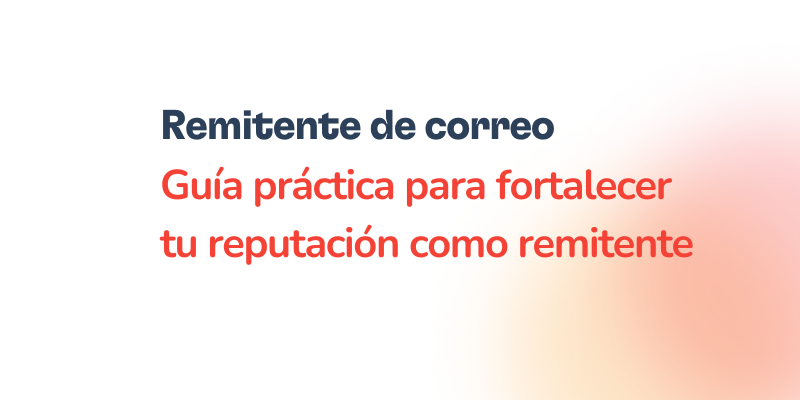If you’re trying to find new customers and leads, one of the simplest and most cost-effective strategies is cold mailing.
Whether your business is just starting out or has been around for years, cold emailing can be an effective way to reach potential clients and generate more leads in a shorter amount of time. However, if not done correctly, it can be worthless – that’s why we’ve created this complete step-by-step guide to sending cold mailing!
By following the steps outlined here, you’ll be able to craft professional messages with the right content that get opened & responded to – helping you build relationships and increase sales. So let’s get down to it!
What is cold email?
A cold email is an unsolicited email that is sent to a recipient who has no prior relationship or contact with the sender. The term “cold” refers to the fact that the recipient is not expecting to receive the email, and the sender has no warm introduction or prior connection with the recipient.
Cold mailing are often used as a marketing or sales tool, as they allow businesses or individuals to reach out to potential customers or clients in a cost-effective way. However, cold emails can also be used for other purposes, such as networking, job hunting, or simply making a connection with someone.
Cold emails are typically personalized to some extent, with the sender making an effort to research the recipient and craft a message that is relevant and compelling. However, they can also be seen as intrusive or spammy if they are poorly written or sent in large quantities without any consideration for the recipient’s interests or needs.
To ensure your cold email success, you can benefit from a sales engagement platform such as SmartReach.io, a platform that automates your entire sales outreach process. Elevate your strategy, establish meaningful connections, and achieve better results.
Cold outreach. Step-by-step.
Step 1: Identify Your Target Audience
The first step to sending a successful cold email is identifying your target audience. You want to ensure that you are reaching out to people who are interested in your product or service. Conduct market research and create a buyer persona that describes your ideal customer.
Step 2: Find the Right Contact Information
Once you have identified your target audience, it’s time to find the right contact information. This can be challenging, but there are a few tools and techniques that can help. You can use LinkedIn to find the email addresses of potential clients or customers. Alternatively, you can use email-finding tools such as Hunter.io or Voila Norbert to find email addresses.
Step 3: Craft an Attention-Grabbing Subject Line
The subject line of your cold email is the first thing that the recipient will see. It’s essential to make it attention-grabbing, as it can determine whether your email gets opened or not. Make sure your subject line is concise and compelling. Personalization is also essential, so include the recipient’s name if possible.
Step 4: Start with a Strong Opening
After the subject line, the opening sentence is the second most important part of your cold email. Your opening should be personalized and relevant to the recipient’s interests or needs. Avoid using generic statements or templates, as they can come across as insincere and spammy.
Step 5: Provide Value
One of the most important things you can do in a cold email is to provide value to the recipient. Show them how your product or service can solve a problem they may have or improve their business in some way. Make sure to do your research and tailor your email to the recipient’s needs.
Step 6: Call-to-Action
Your call-to-action (CTA) is the next essential part of your cold email. You want to be clear and direct about what you want the recipient to do. It could be to schedule a call, book a demo, or visit your website. Make sure your CTA is relevant and aligns with your overall goal.
Step 7: Follow-Up
Following up is crucial in cold outreach. It can take several follow-ups before you get a response, so don’t be discouraged if you don’t hear back after the first email. However, avoid being too pushy or spammy. Keep your follow-up emails short and sweet, and remind the recipient of the value you can provide.
Cold email tips
Here are some additional tips to help you send effective cold emails:
☑ Keep it short and sweet: Your cold email should be concise and to the point. Avoid using long paragraphs or jargon that can be confusing.
☑ Personalize: Personalization is key to making your cold email stand out. Use the recipient’s name and mention something specific about their business or interests.
☑ Use a professional email signature: Include your name, job title, and contact information in your email signature. It can add credibility and make it easier for the recipient to contact you.
☑ Test your email: Before sending your cold email, test it to ensure it looks good on different devices and email clients.
☑ Don’t spam: Avoid sending the same email to multiple recipients. It can come across as spammy and unprofessional.
Cold email deliverability
Cold email deliverability is the ability to successfully deliver your cold email to the recipient’s inbox without it being marked as spam. Here are some tips to improve your cold email deliverability:
◾ Use a professional email service provider (ESP): Using a reputable ESP can improve your email deliverability by ensuring that your emails are sent from a trusted server.
◾ Avoid using spam trigger words: Words such as “free,” “discount,” or “limited time” can trigger spam filters. Be careful with your language and avoid using too many promotional phrases.
◾ Include an unsubscribe link: Including an unsubscribe link in your email can help you comply with anti-spam laws and improve your email deliverability.
◾ Warm up your email account: Warming up your email account involves gradually increasing the number of emails you send to avoid triggering spam filters.
Utilizing an email warm-up service like Warmy.io offers numerous advantages to businesses and individuals looking to enhance their email deliverability and reputation.
One of the key benefits is improved inbox placement, as warming up your IP and domain increases your sender score, drastically reducing the likelihood of emails landing in the spam folder.
Warmy.io achieves this by simulating human-like email interactions and gradually increasing the daily email volume sent, establishing a healthy email sending reputation amongst major Internet Service Providers (ISPs).
Furthermore, Warmy.io ensures higher engagement rates on your emails, as subscribers are more likely to open and interact with emails that reach their primary inbox.
With its artificial intelligence-driven algorithms, Warmy.io creates personalized replies and responses, fostering trust and legitimacy with recipients. This innovative approach enhances the overall email experience and boosts your email campaign’s success.
By avoiding blacklists and spam traps, Warmy.io also protects your domain’s long-term credibility. It does so by mimicking natural email behavior while maintaining consistency in your sending patterns. Consequently, enhanced deliverability leads to better open and click-through rates, enabling you to maximize the potential of your email marketing campaigns.
In summary, using Warmy.io’s email warm-up service will elevate your email deliverability, reputation, engagement, and overall email marketing campaign success.
Conclusion
Sending cold emails can be a highly effective way to generate leads and increase revenue, but it requires careful planning and execution. By following the steps outlined in this guide and implementing the tips we’ve provided, you can increase your chances of sending successful cold outreach.
Remember to always personalize your emails, provide value, and follow up. Additionally, prioritize your cold email deliverability by using a professional ESP, avoiding spam trigger words, and monitoring your email metrics. With these strategies in place, you’ll be well on your way to sending successful cold outreach that help you grow your business.






![Text on a white background reads: SMTP Error 451 How to Resolve [SOLVED] in bold black and red text. A faint, blurred orange spot in the lower right corner adds subtle emphasis to the SMTP Error 451 issue.](https://warmy-blog-wordpress-bucket.s3.amazonaws.com/wp-content/uploads/2025/12/24095059/SMTP451.webp)





